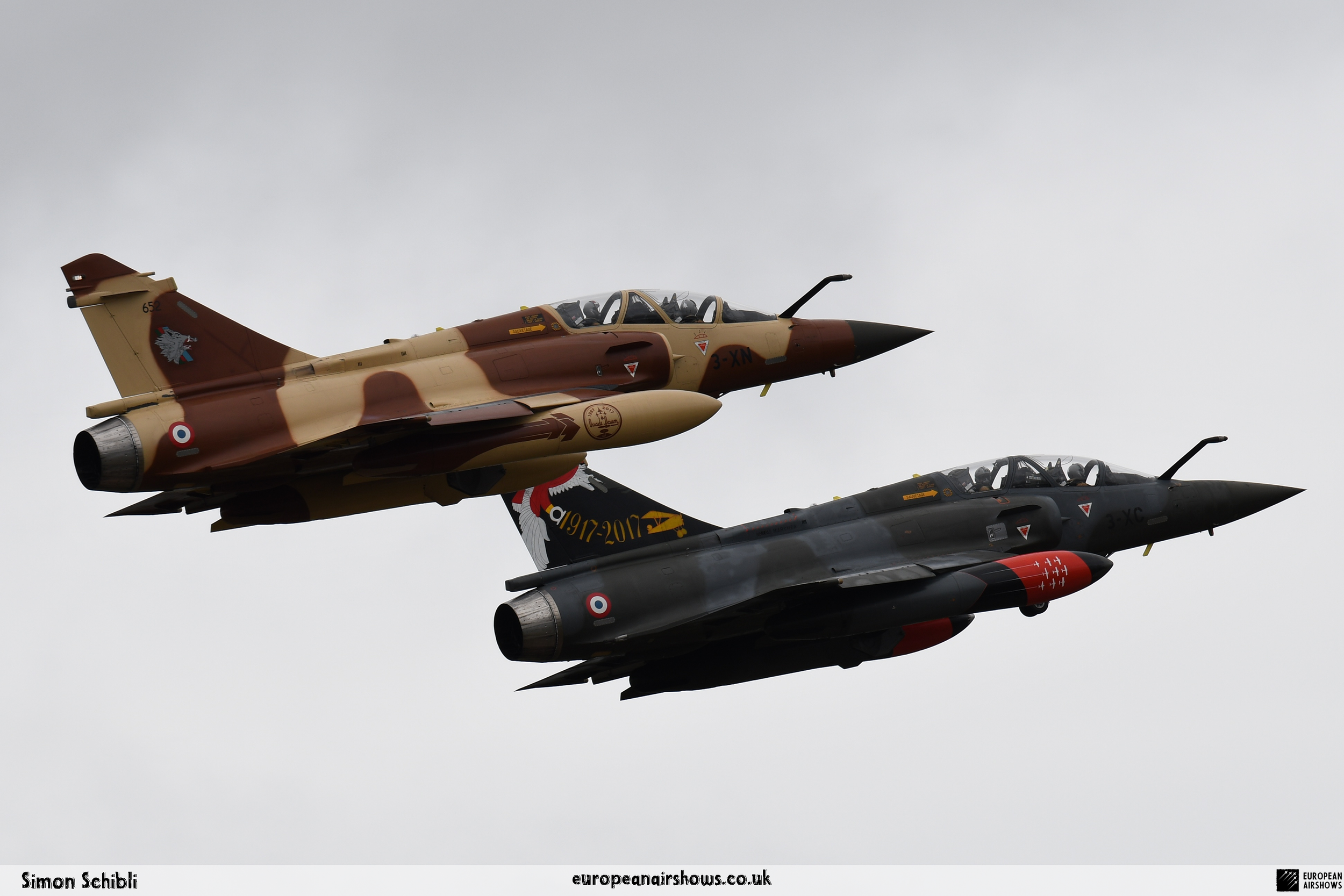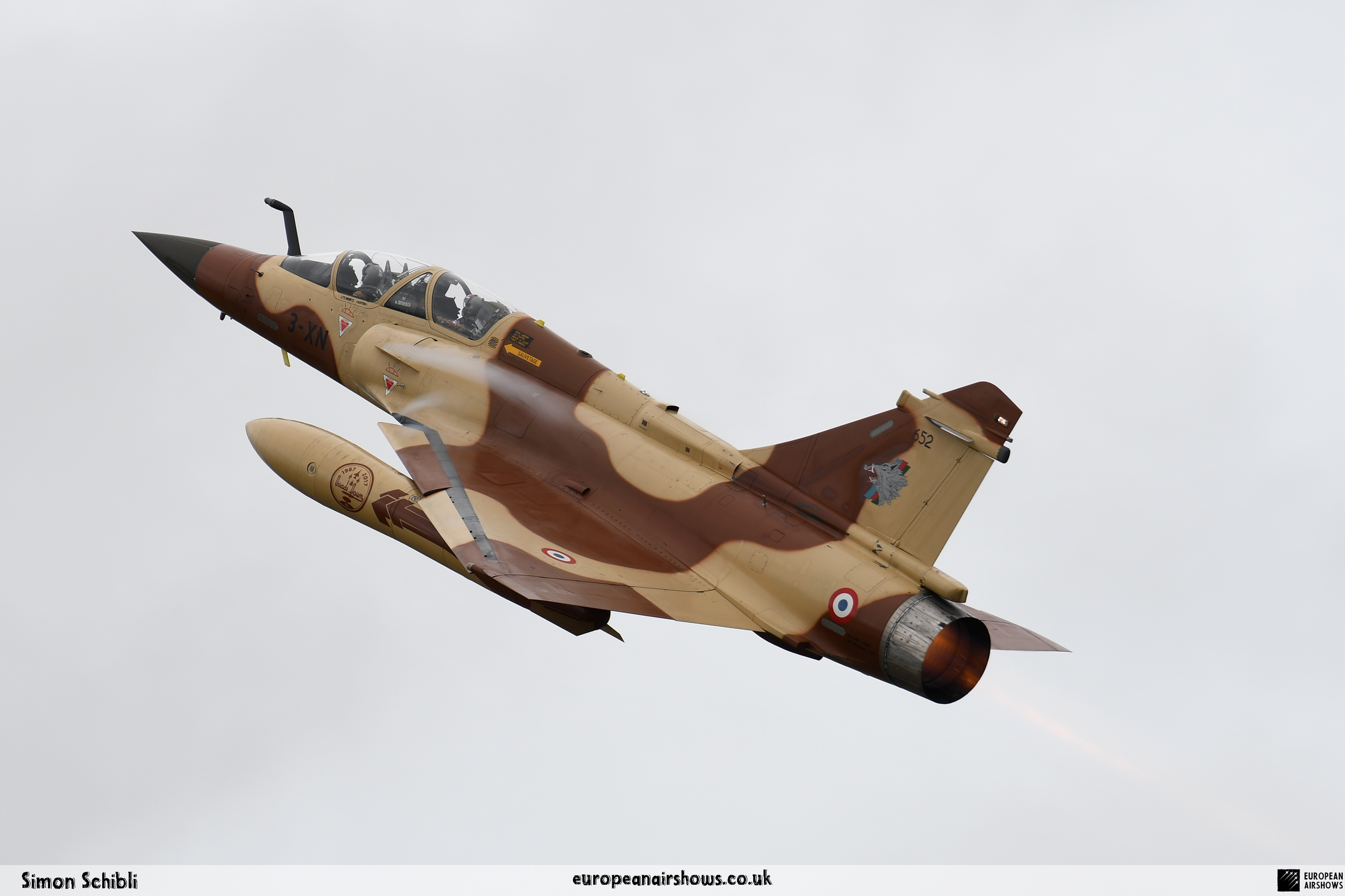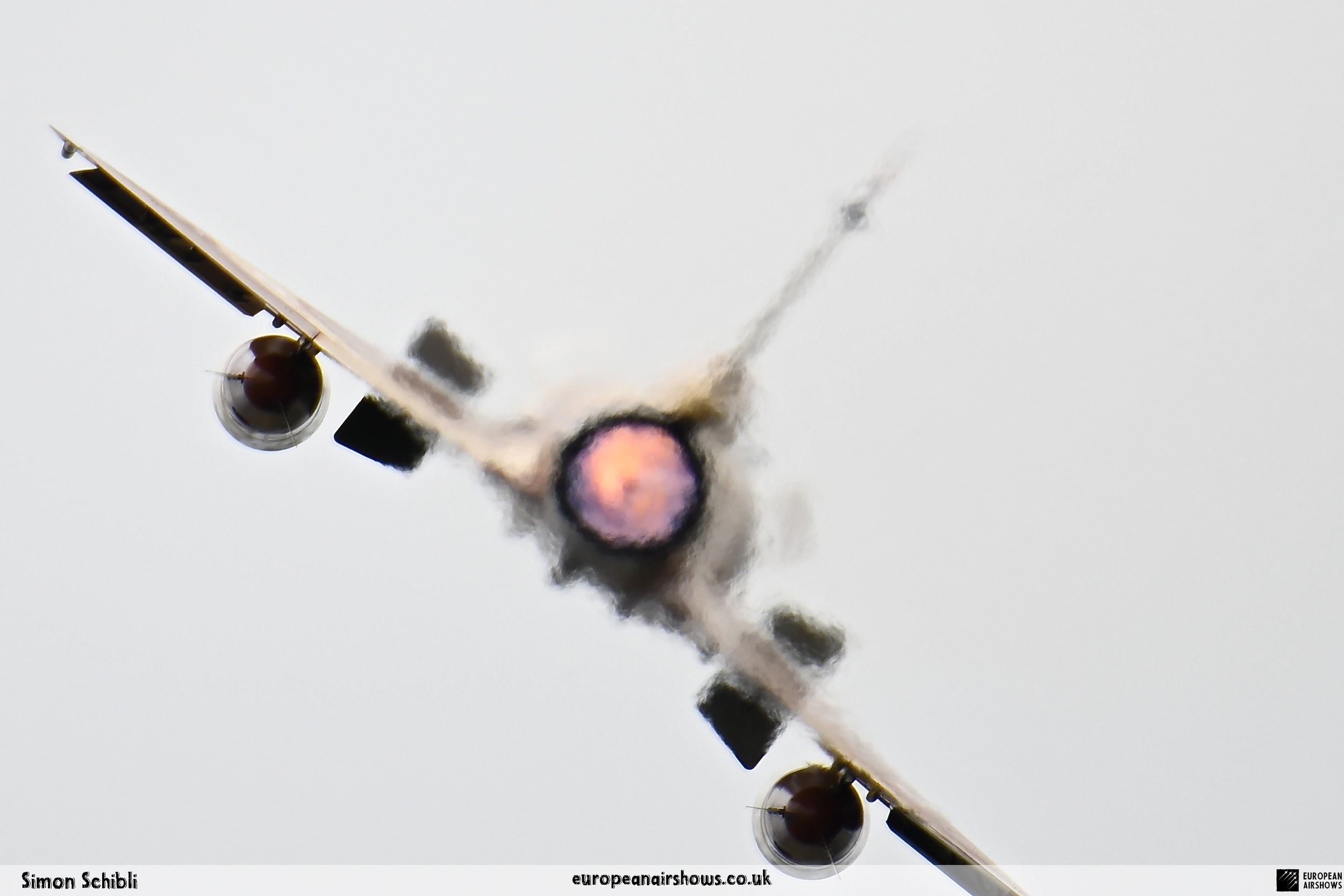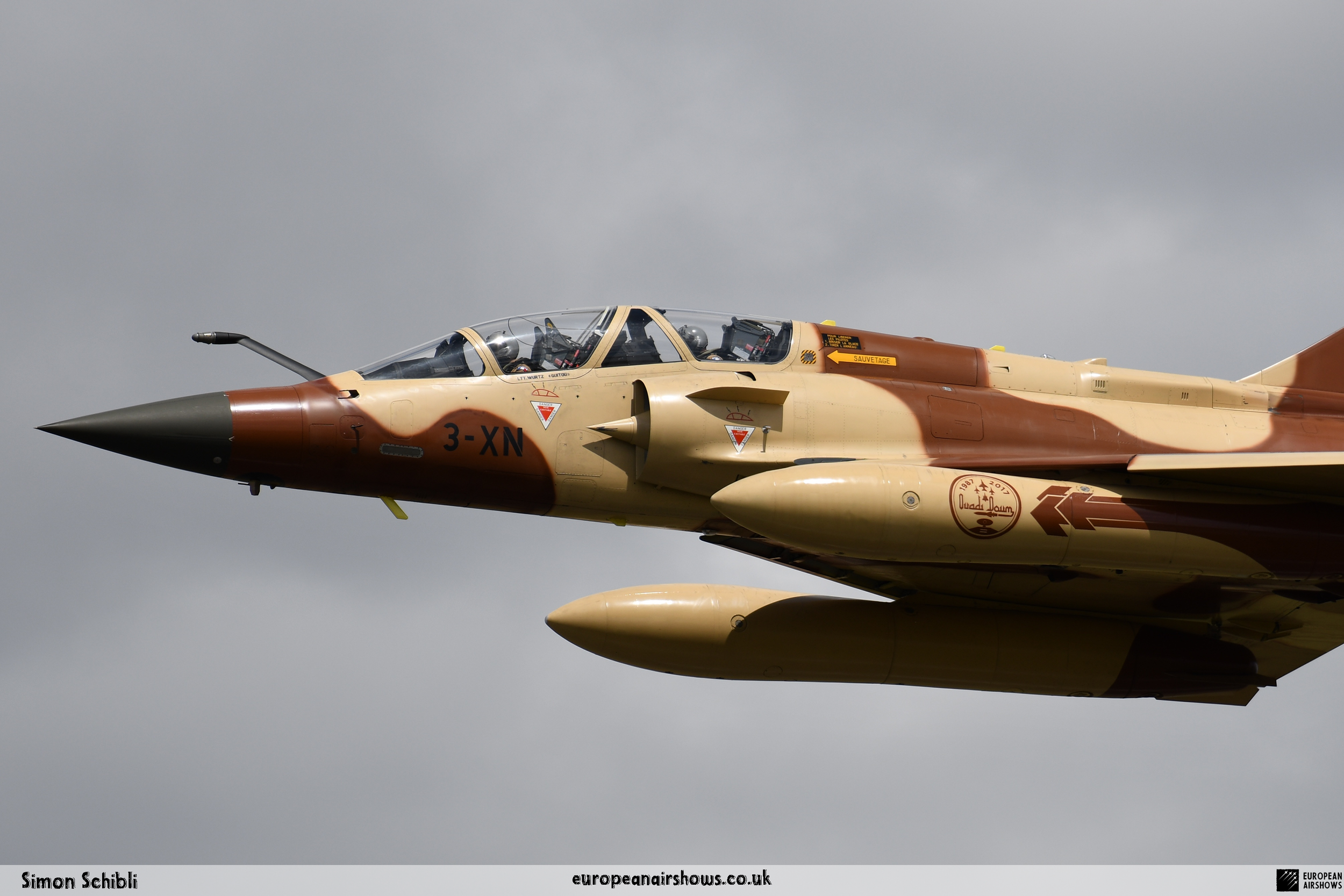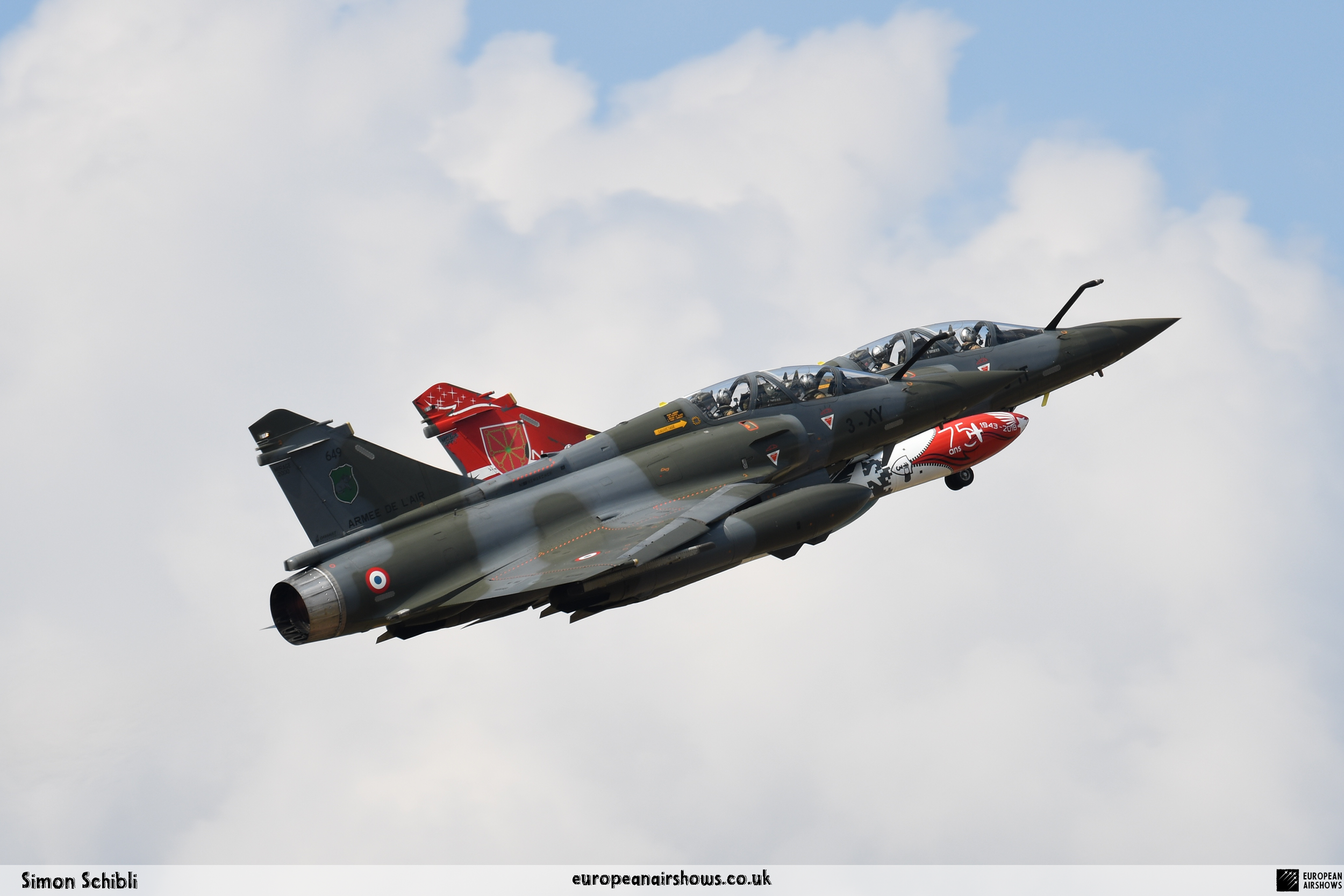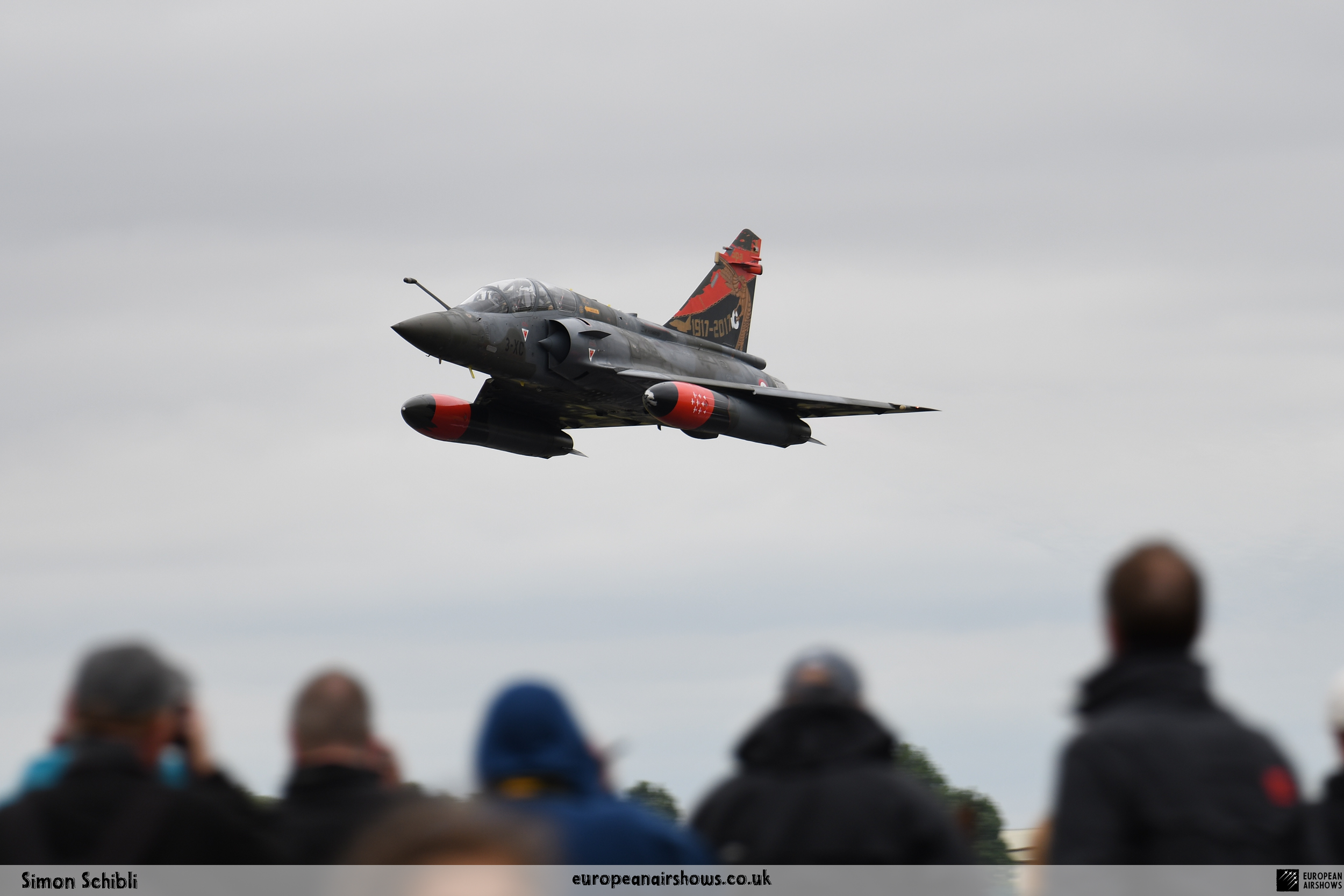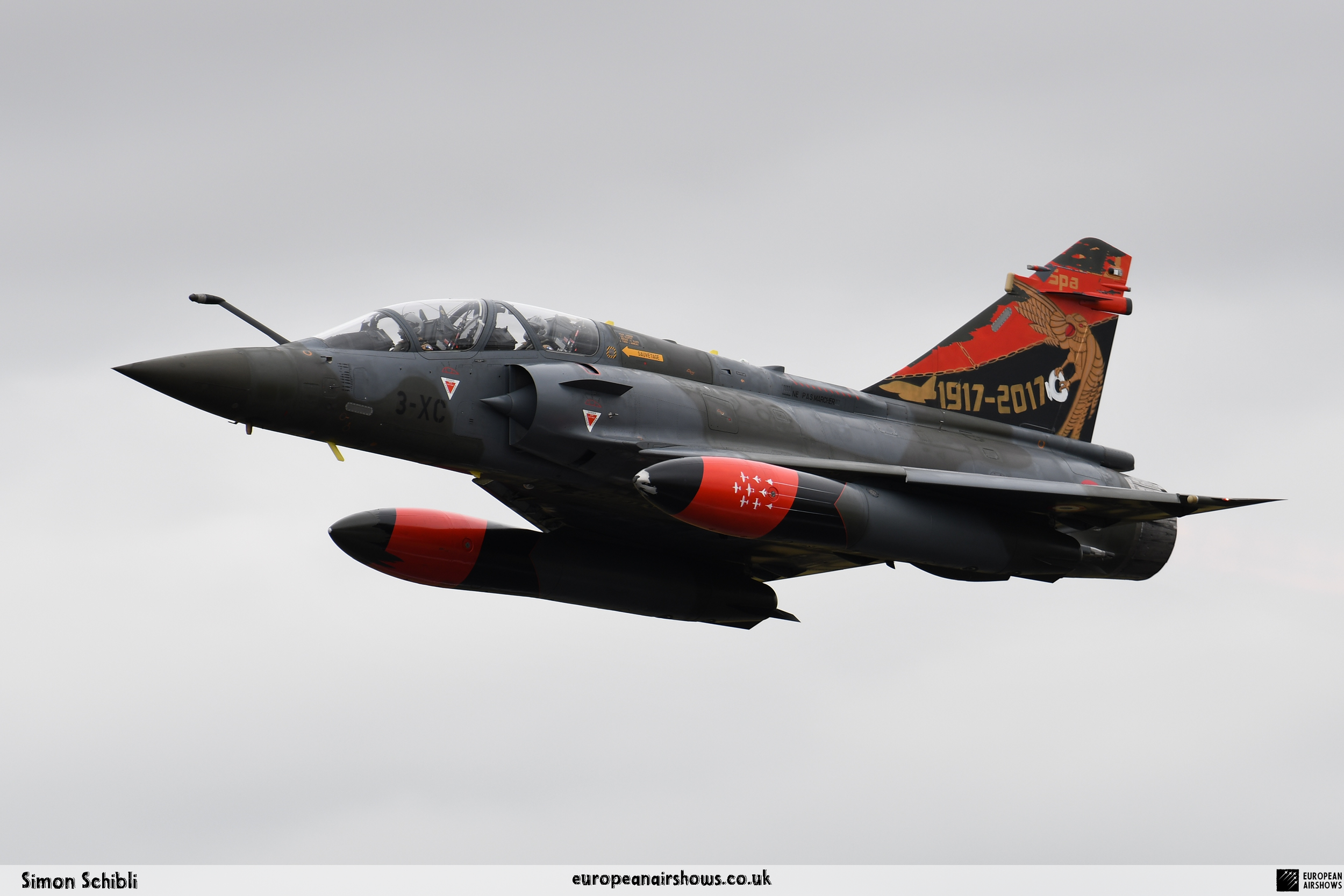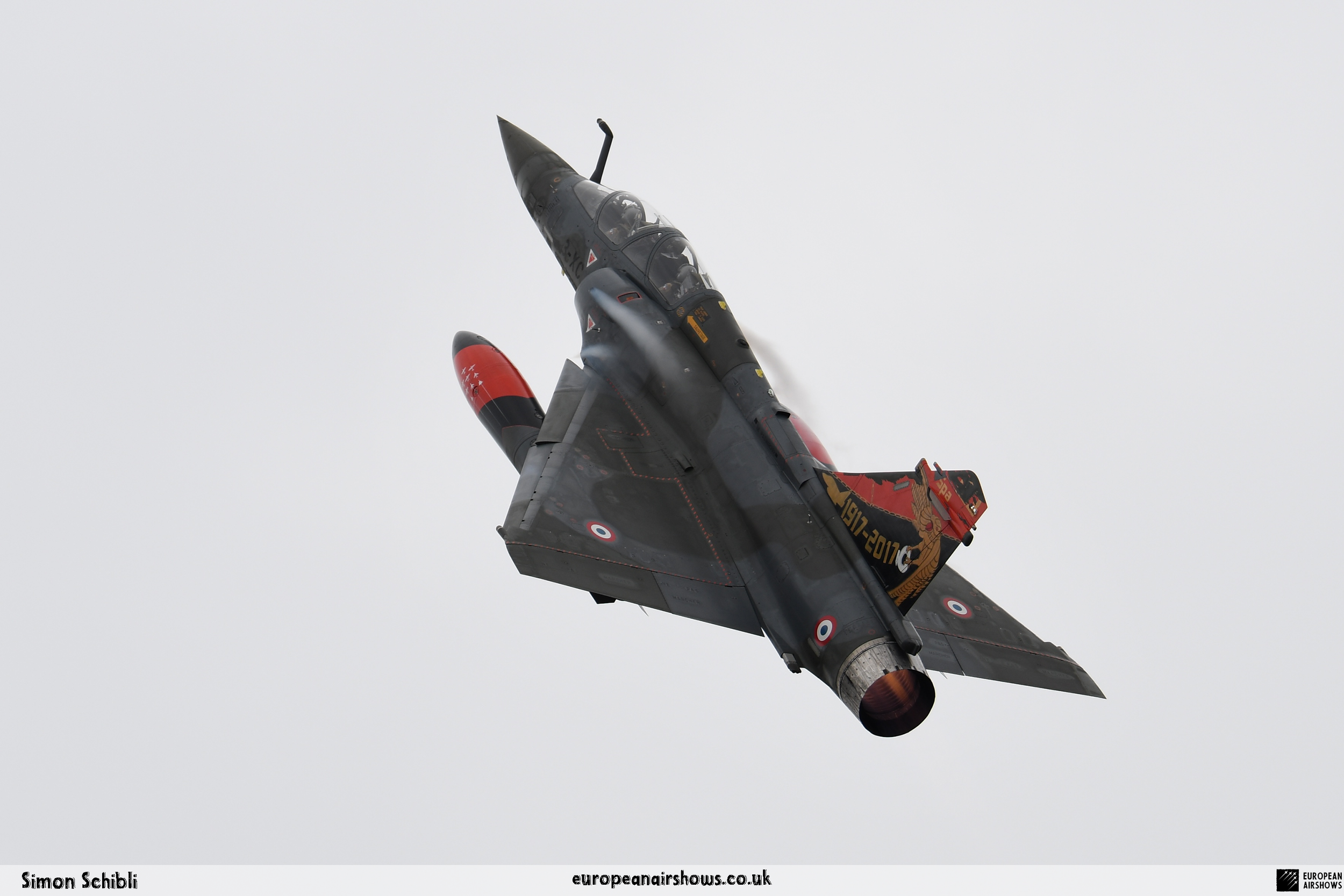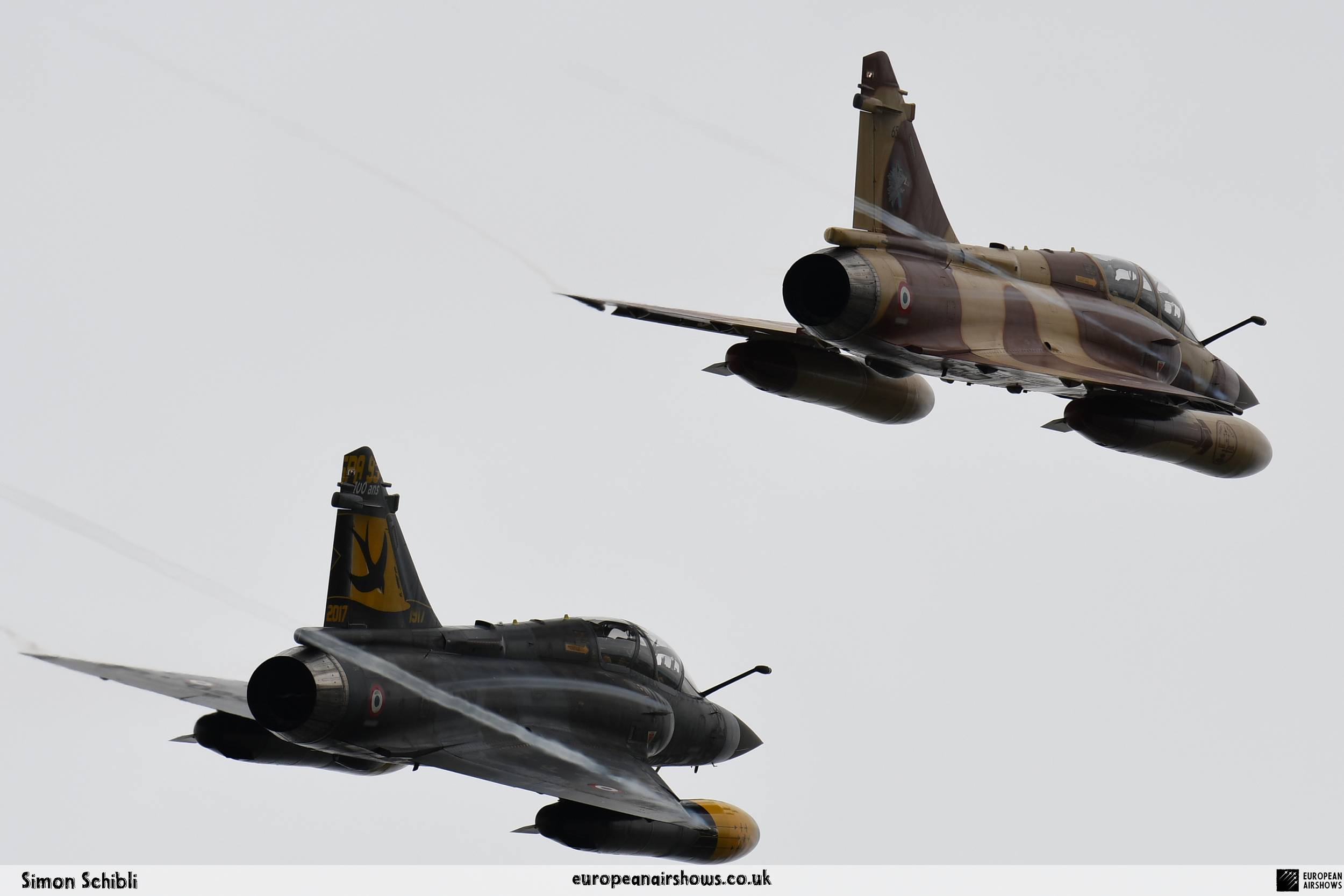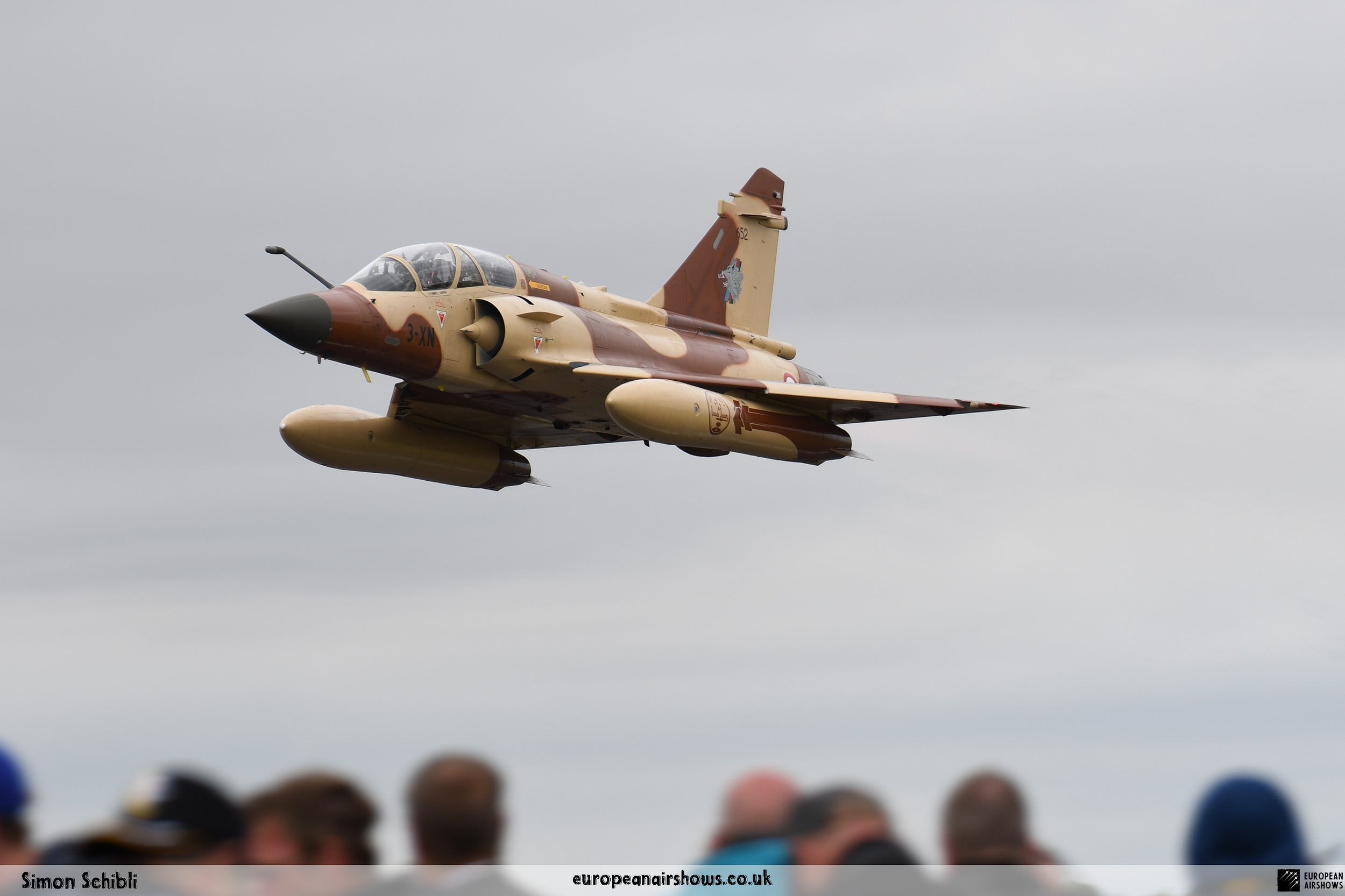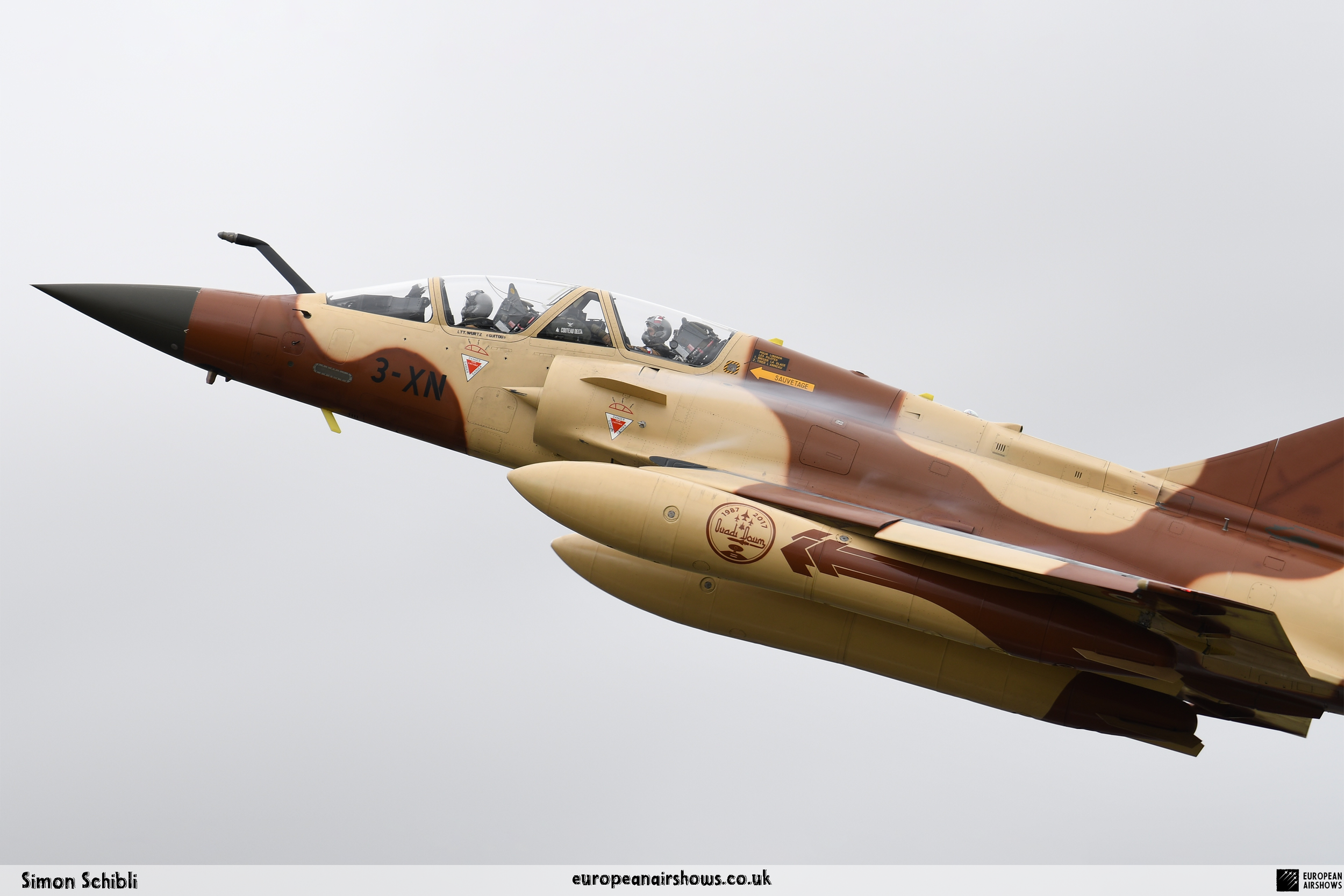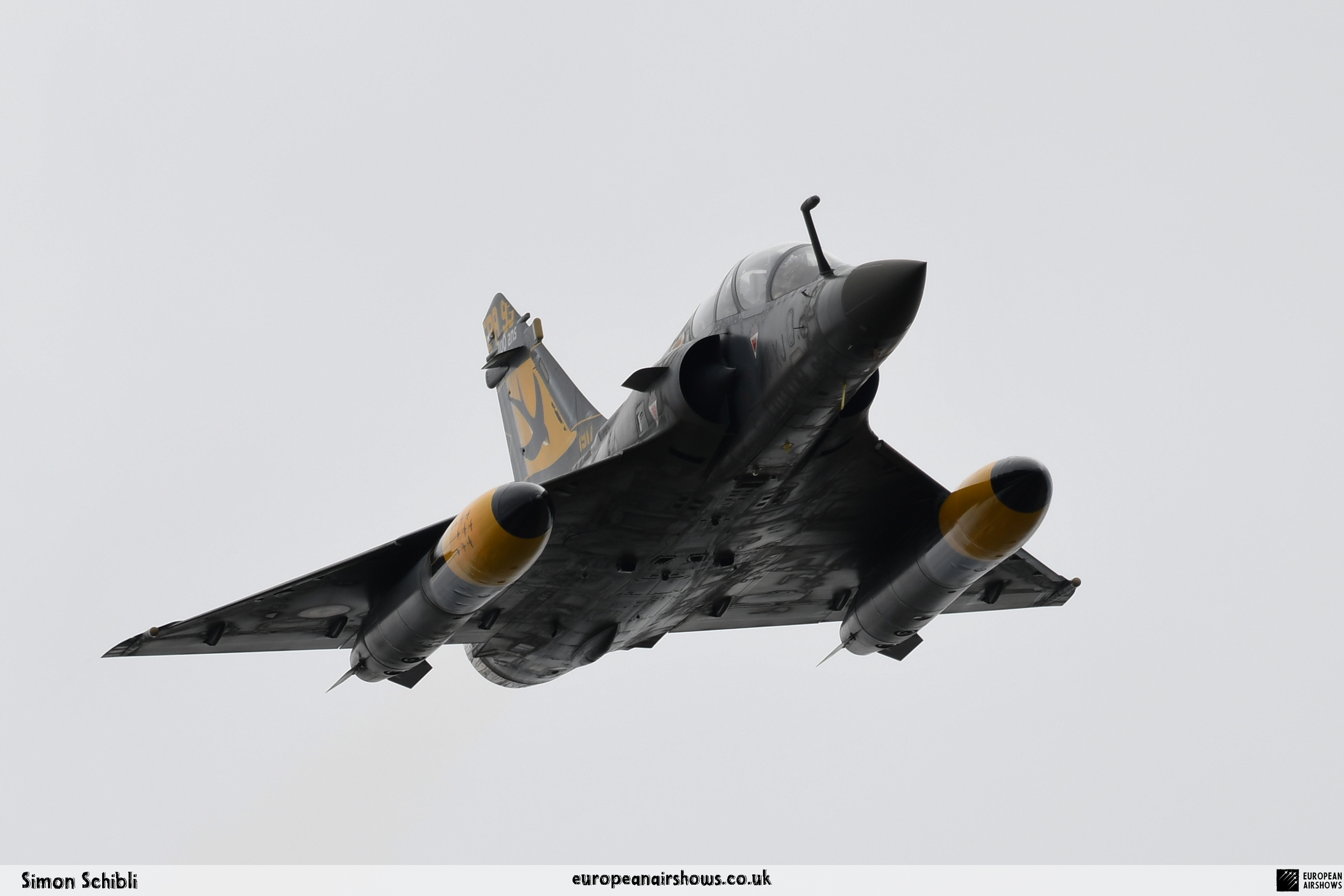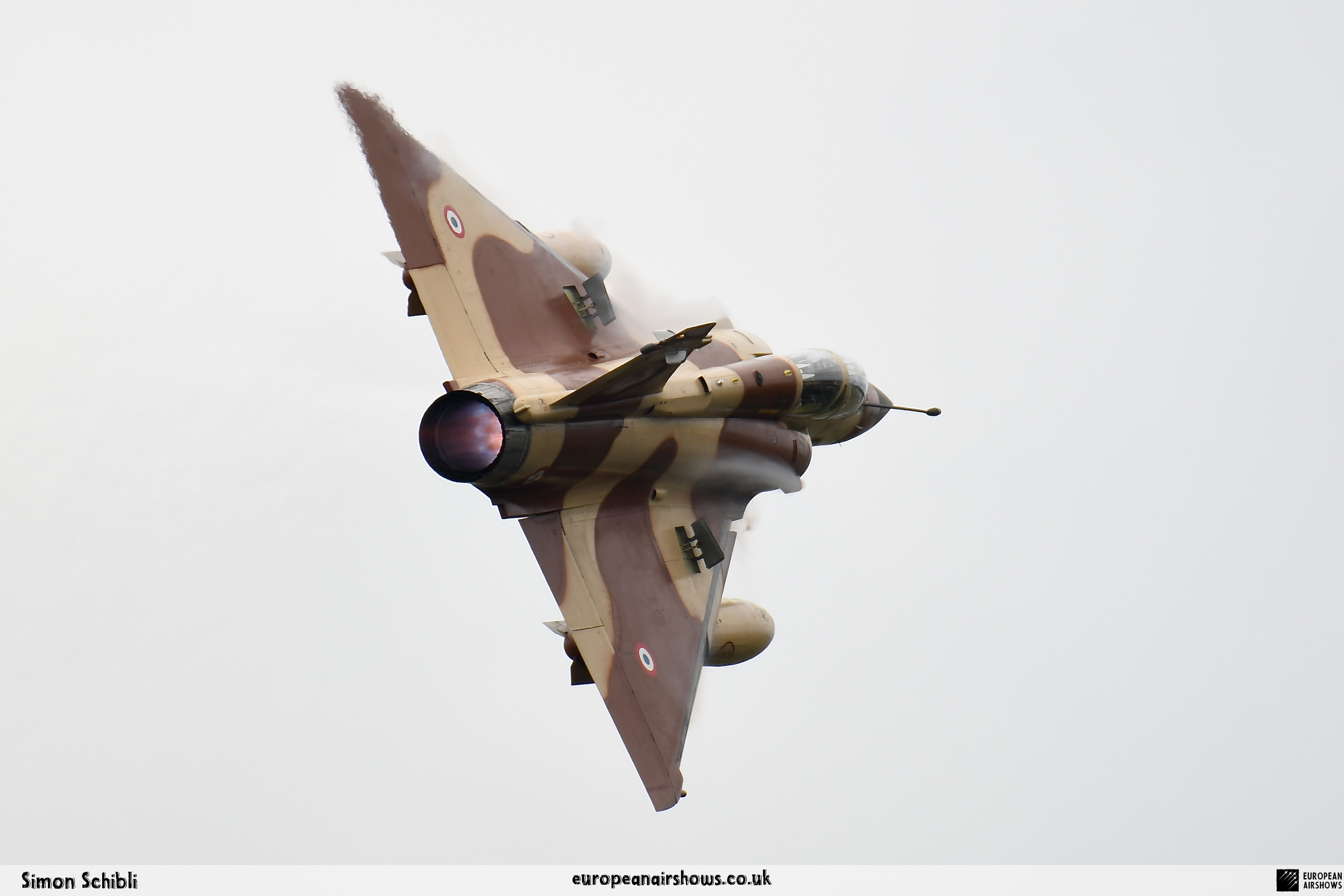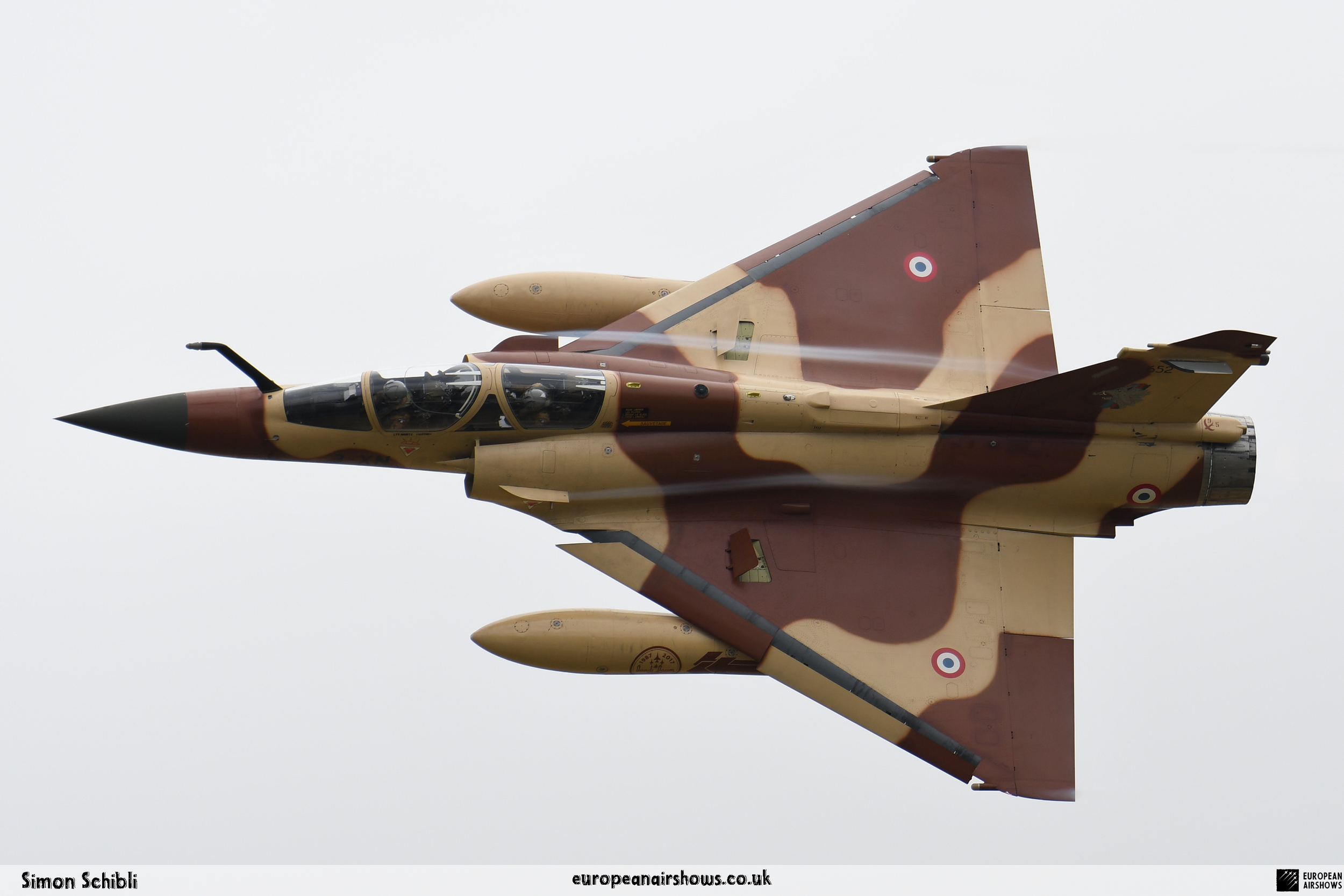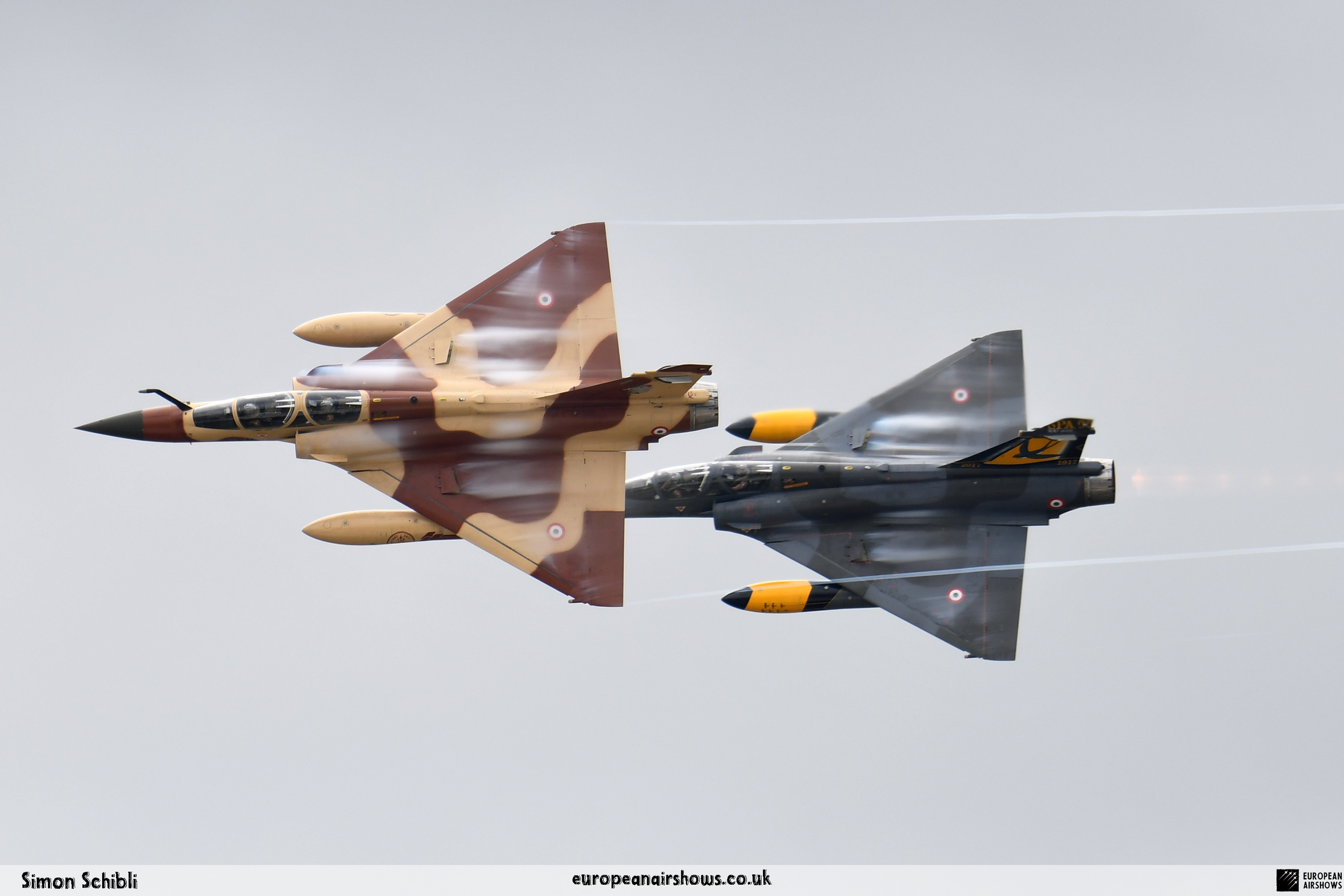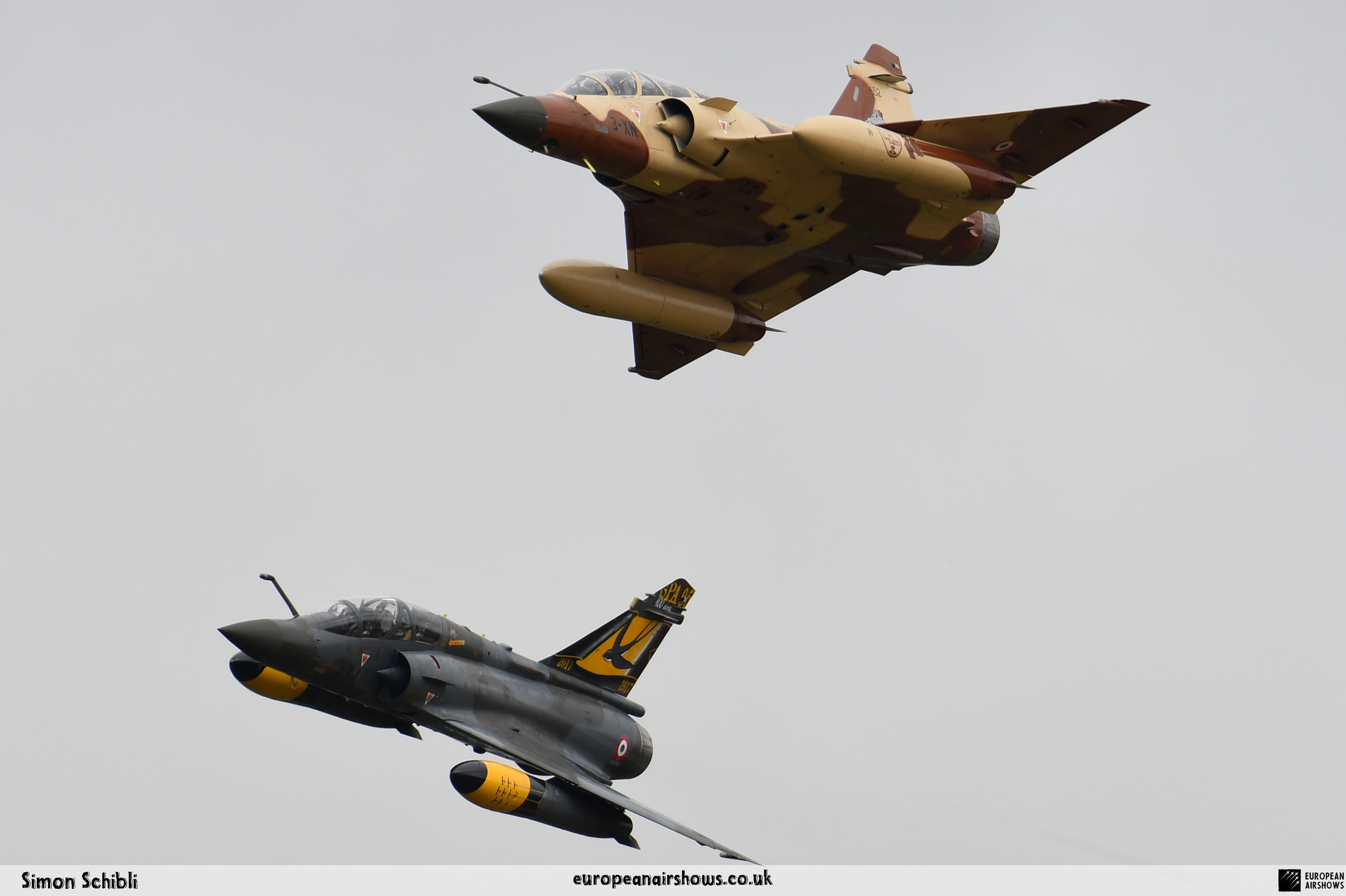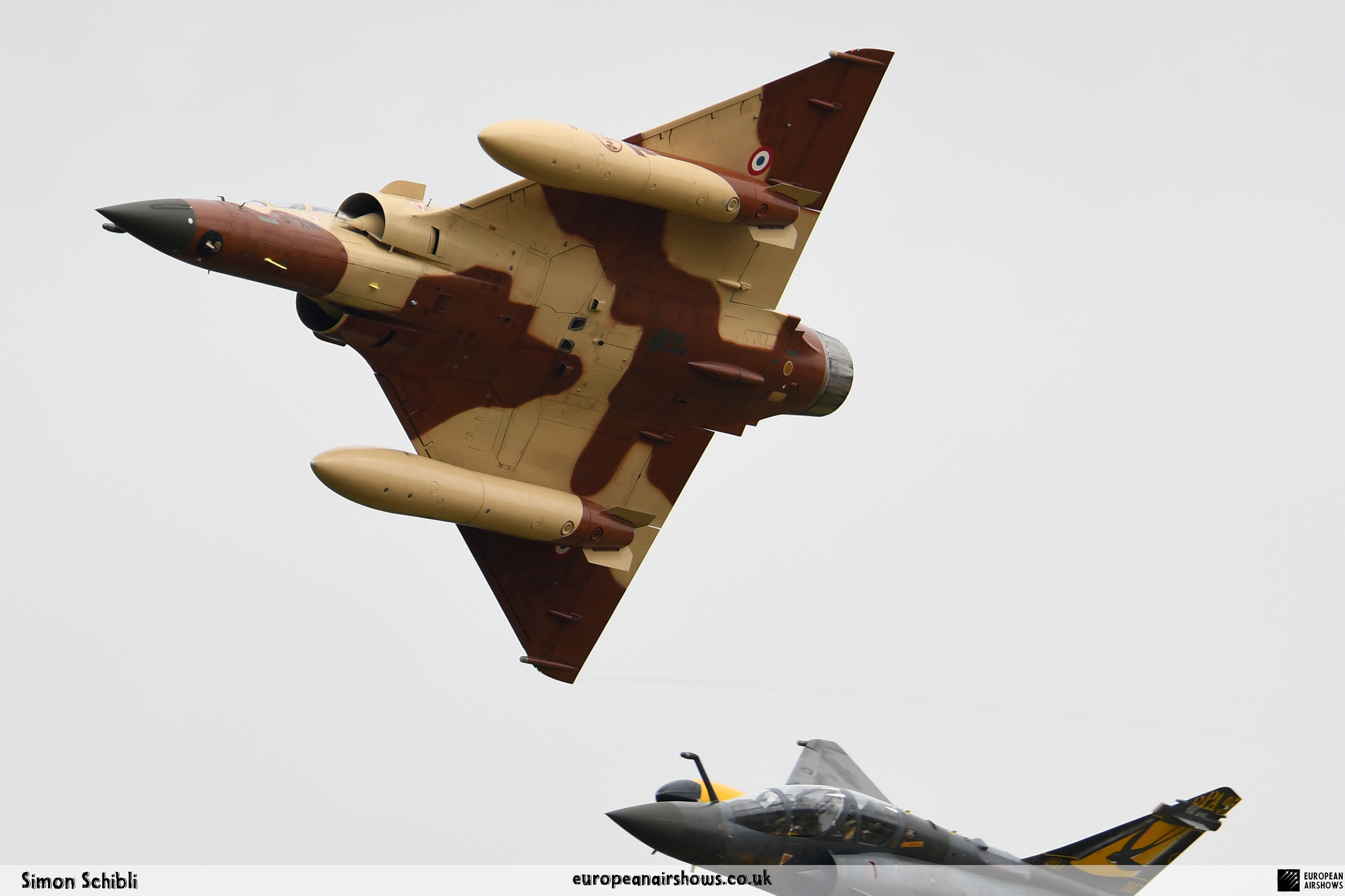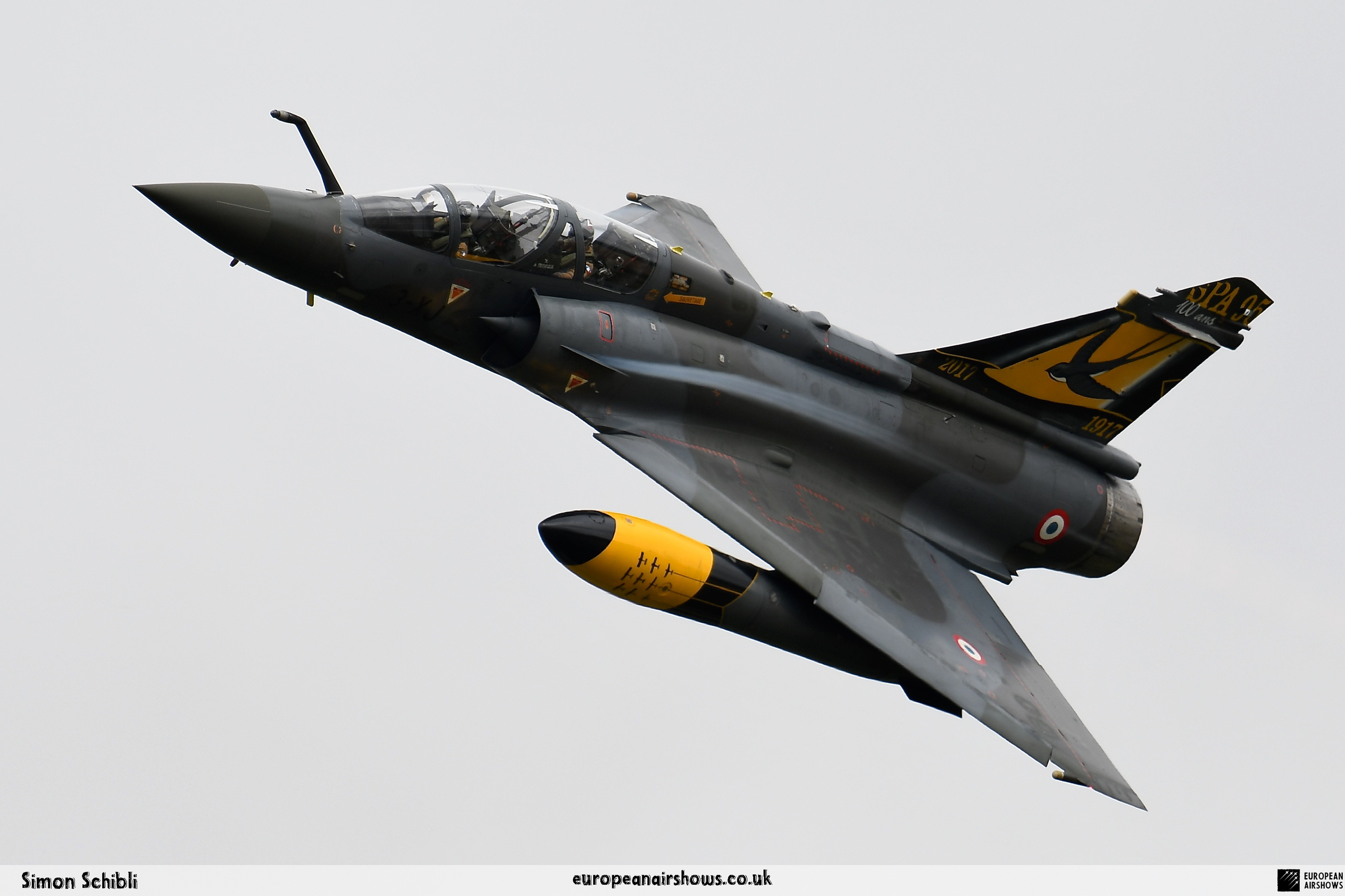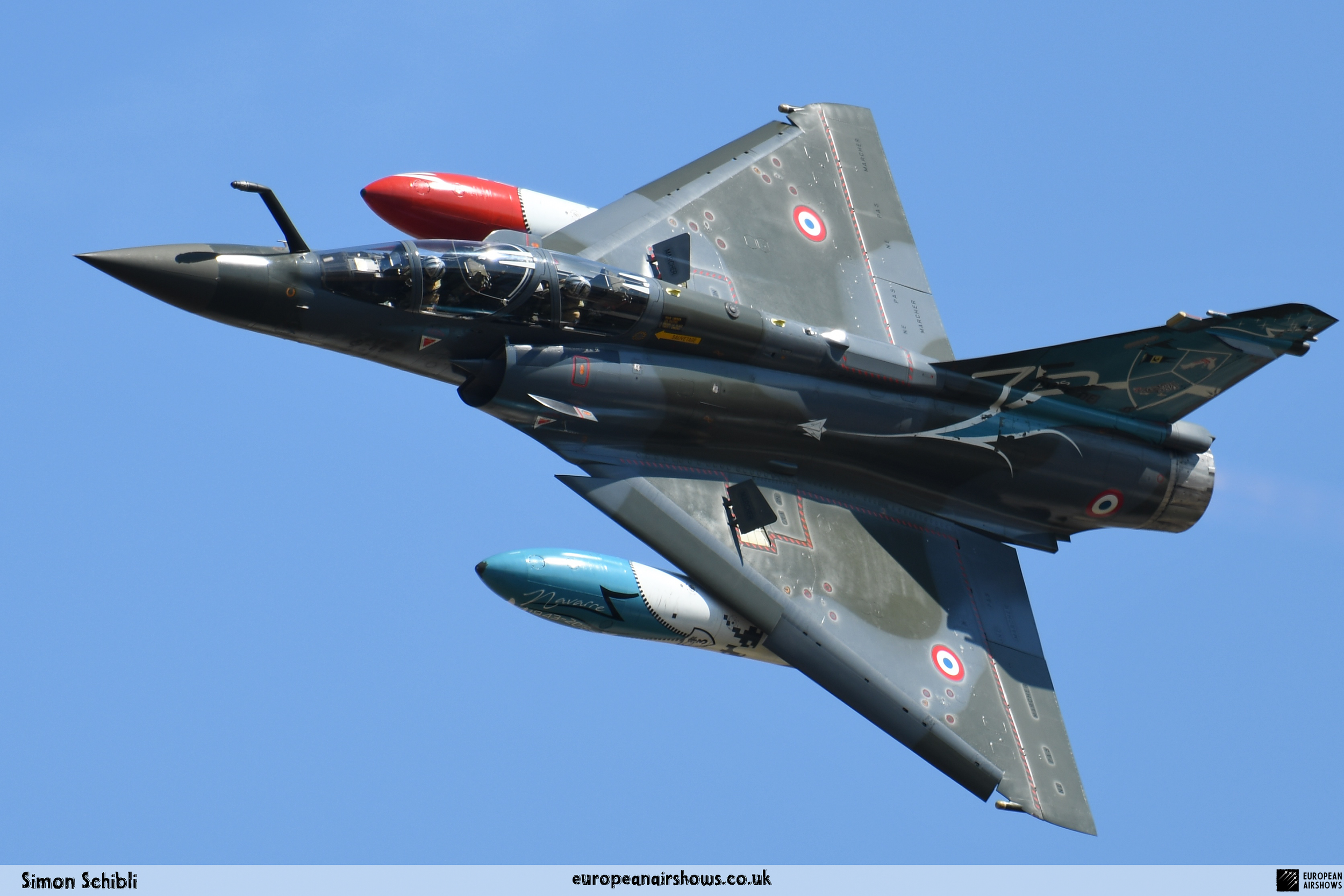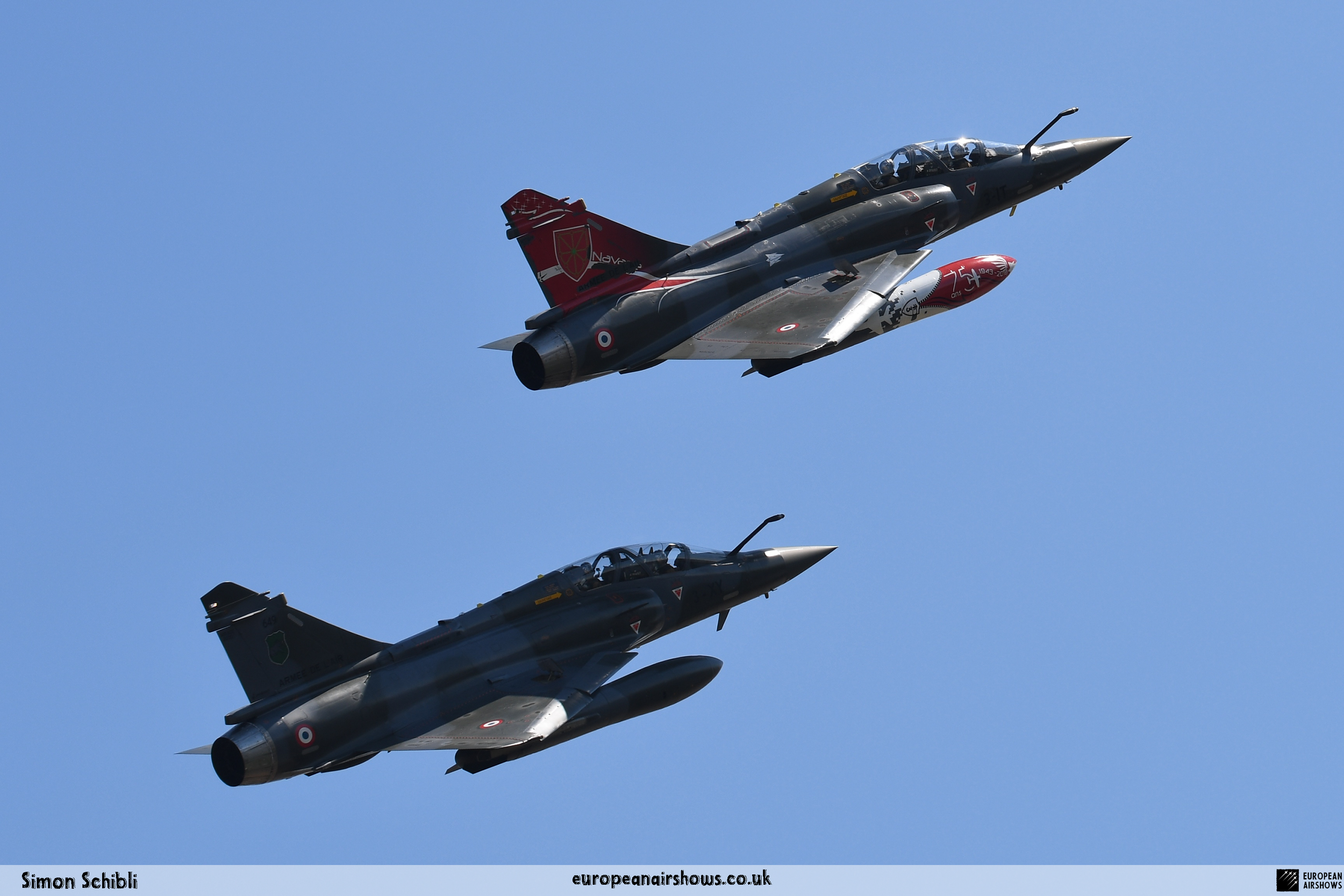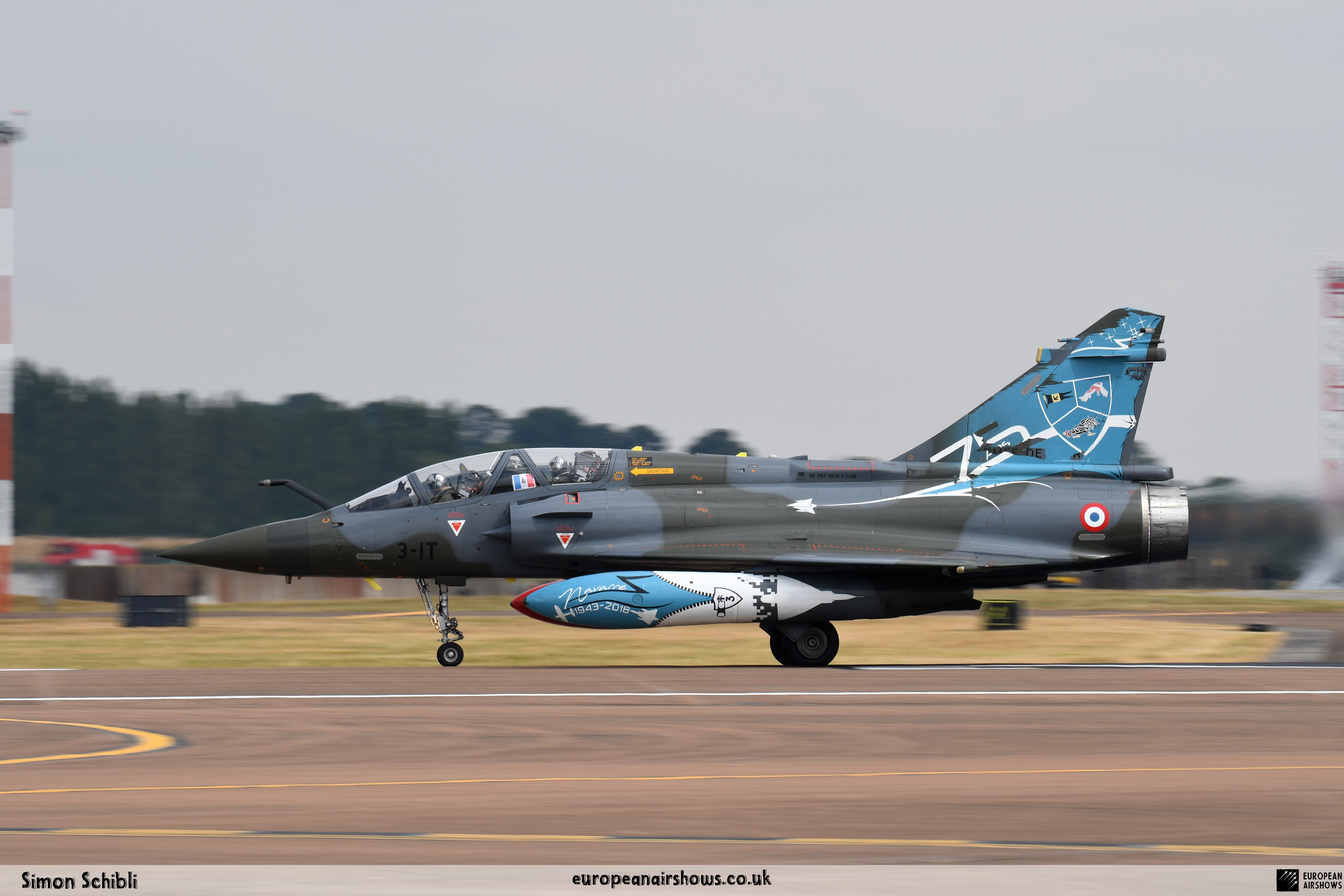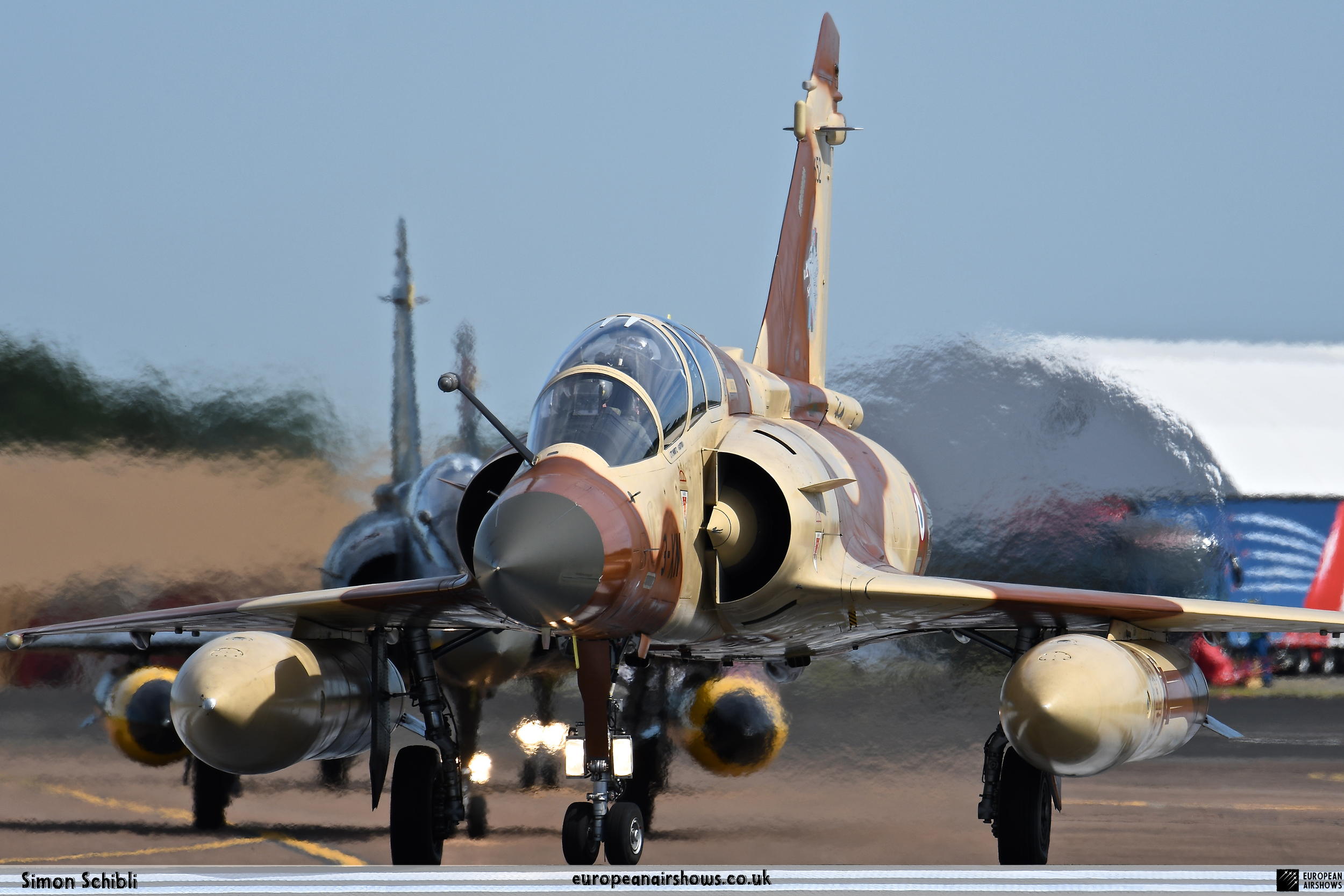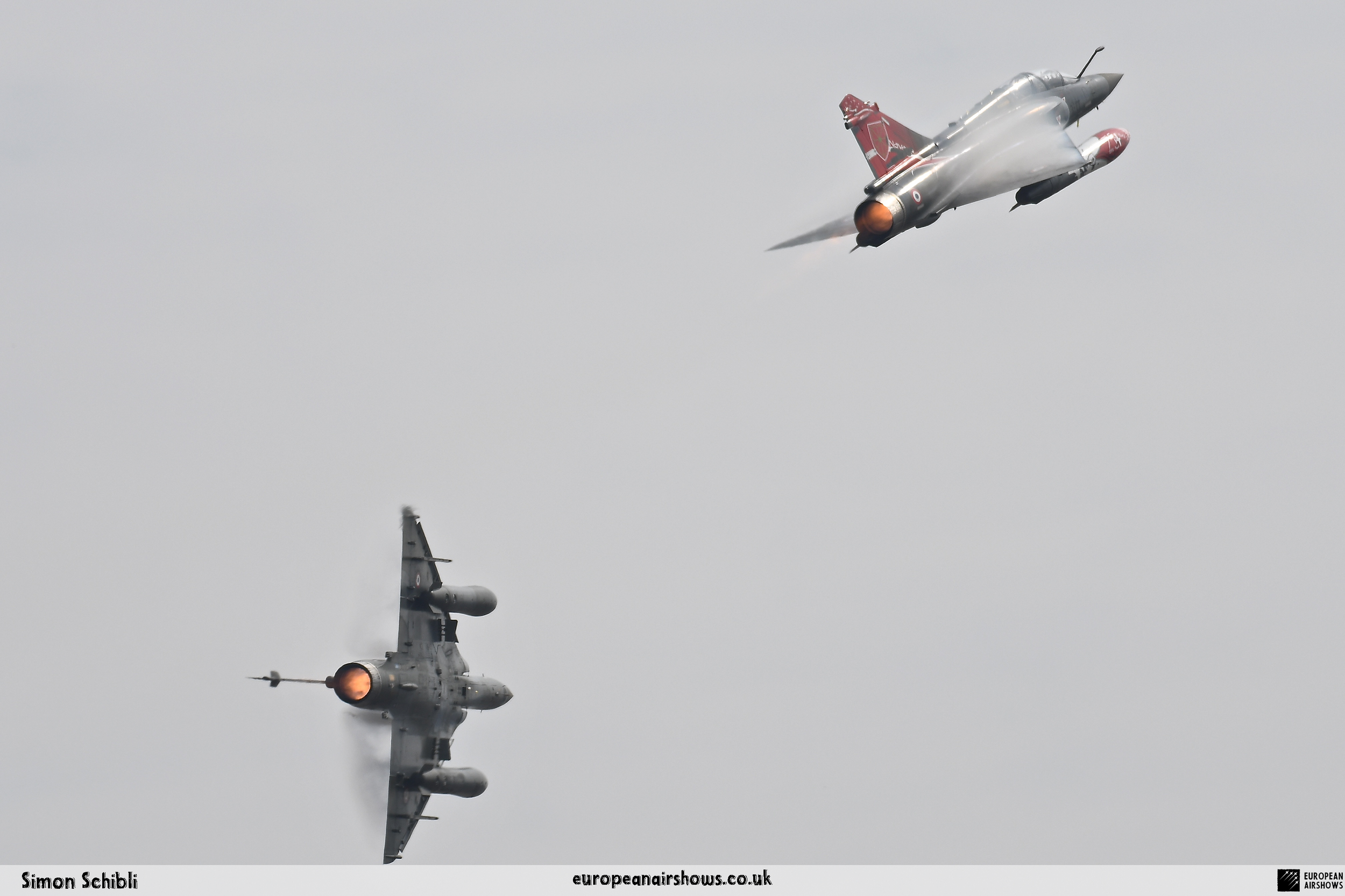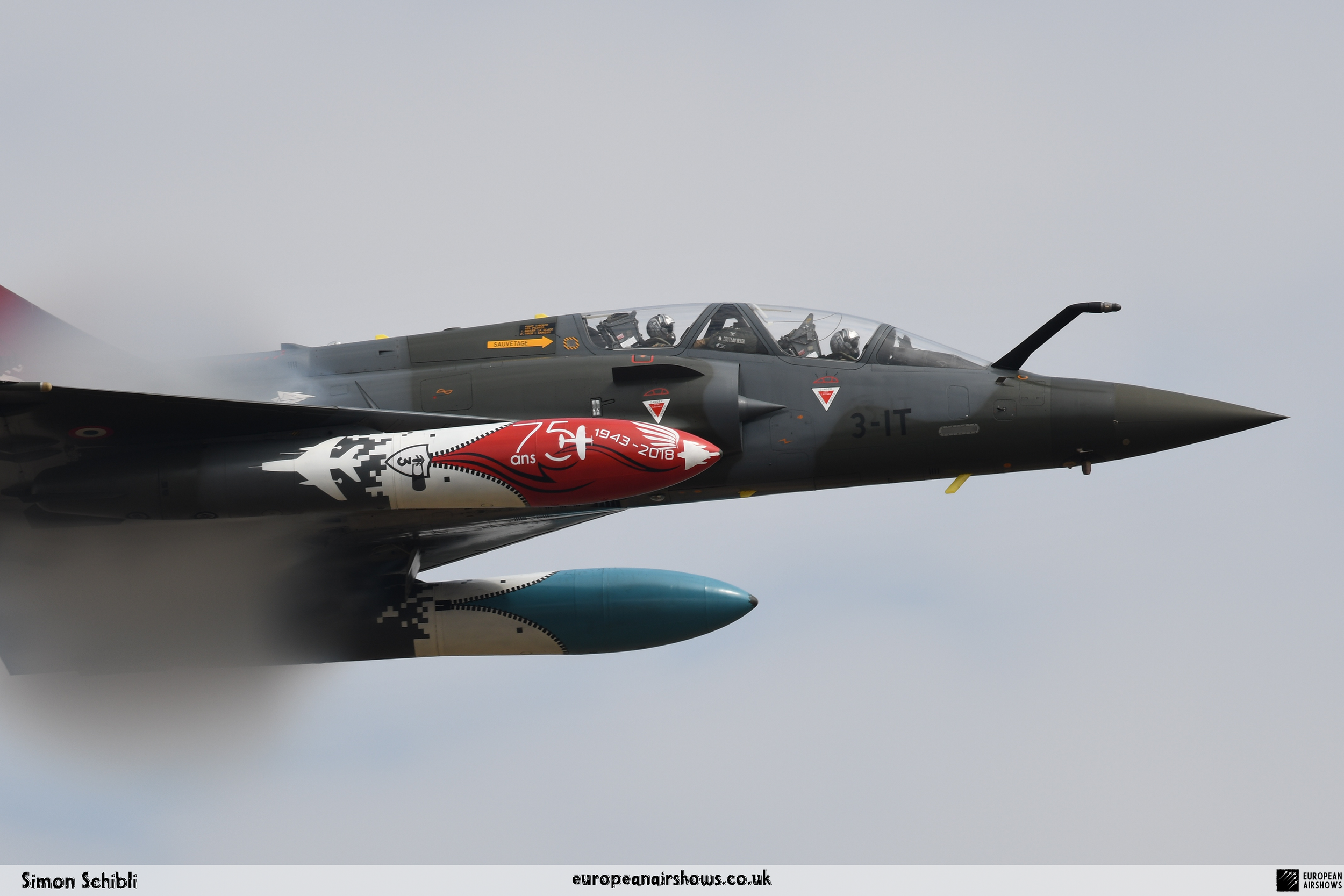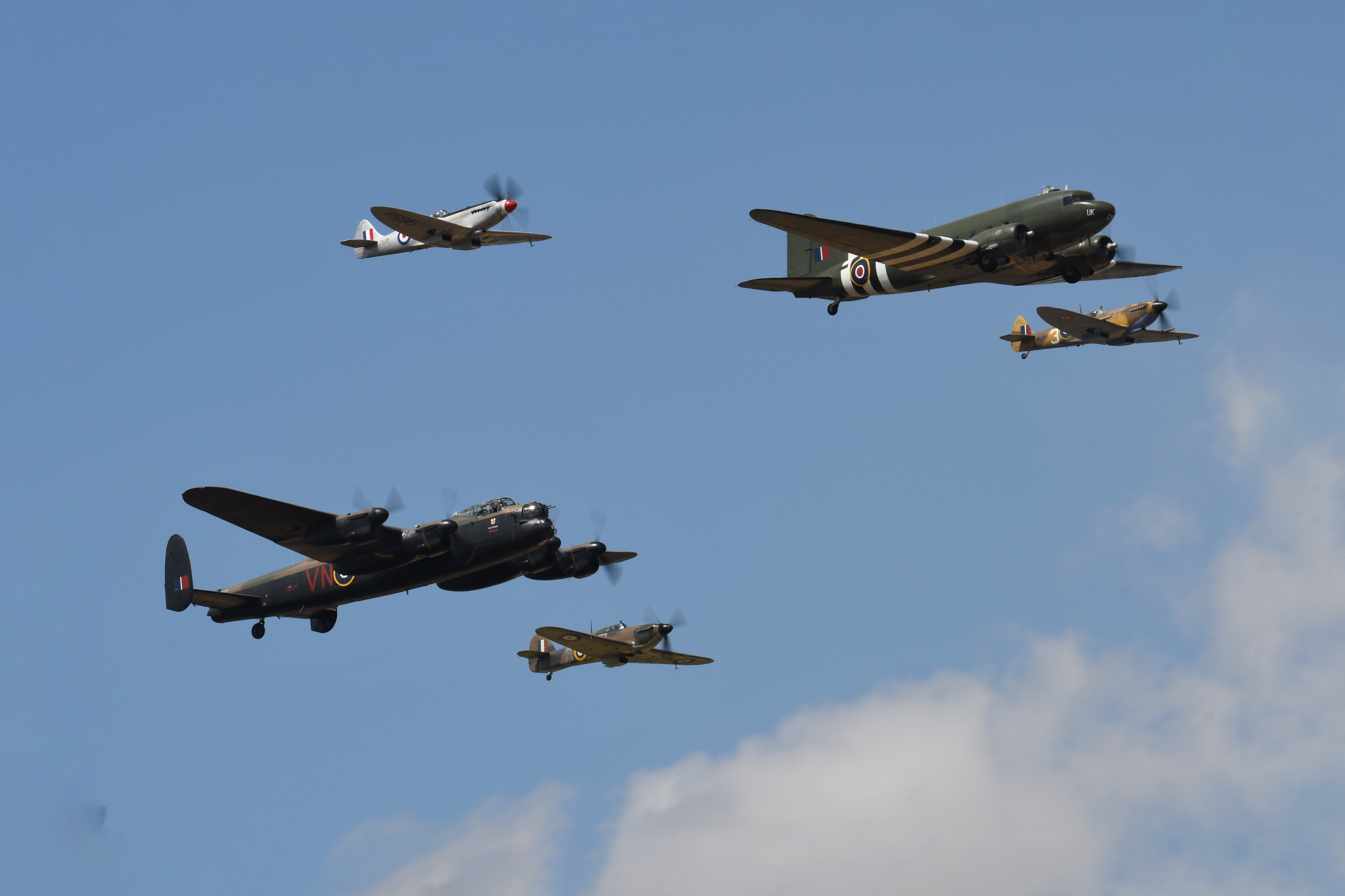Couteau Delta
Country
France
Size
2 Aircraft
Base
Air Base BA 133 Nancy-Ochey
The Couteau Delta is a highly skilled tactical demonstration team of the French Air and Space Force that was formed in 2017, replacing the Ramex Delta tactical demonstration team that flew two Dassault Mirage 2000N. The Mirage 2000N was a nuclear-capable version, which has since been retired by the French Air Force with the role of specialist nuclear strike passed to the Rafale B, while the Mirage 2000D is used for conventional attack missions. The Couteau Delta team is composed of pilots from Escadrons de Chasse 2/3 'Champagne' and 3/3 'Ardennes' based at Nancy-Ochey. They perform awe-inspiring manoeuvres using two Dassault Mirage 2000D strike aircraft, which are formidable aircraft that serve solely in France. The Mirage 2000D is used explicitly by the Couteau Delta team, an aircraft renowned for its high manoeuvrability and effectiveness in combat.
The Mirage 2000 is a versatile aircraft that has been in active service with the Armée de l'Air for over four decades since its introduction in the early 1980s. It comes in different versions, including fighter and conventional strike versions. It has been extensively used by the French Air Force in different variants, including Iraq, the Balkans, Afghanistan, Libya, and Syria. Other countries, such as Egypt, Greece, India, Peru, Qatar, the Republic of China, and the UAE, also use the Mirage 2000, which is a testament to its effectiveness in combat.
Couteau Delta is a purely tactical demonstration team that showcases the roles and performance of the Mirage 2000D during their 15-minute display, executing high G tactical manoeuvres at speeds of up to 620 knots. The team demonstrates the raw power and agility of the Mirage 2000 with its impressive speed and manoeuvrability. The Couteau Delta team's display is always a treat to watch, as they never fail to impress with their skill and precision.
| Back to Top |
Dassault Mirage 2000
The Dassault Mirage 2000 is a French multirole, single-engined, fourth-generation jet fighter manufactured by Dassault Aviation. It was designed in the late 1970s as a lightweight fighter to replace the Mirage III for the French Air Force (Armée de l'air). The Mirage 2000 evolved into a multi-role aircraft with several variants developed, with sales to a number of nations. It was later developed into the Mirage 2000N and 2000D strike variants, the improved Mirage 2000-5, and several export variants. Over 600 aircraft were built and it has been in service with 9 nations.
The aircraft uses retractable Tricycle landing gear by Messier-Dowty, with twin nosewheels and a single wheel on each main gear. A runway tailhook or a fairing for a brake parachute can be fitted under the tail, which can operate in conjunction with the landing gear's carbon brakes to shorten landing distances. A removable refuelling probe can be attached in front of the cockpit, offset slightly to the right of the centre. The aircraft flight control system is fly-by-wire.
The Mirage 2000 is available as a single-seat or two-seat multirole fighter. The pilot flies the aircraft by means of a centre stick and left-hand throttles, with both incorporating HOTAS controls. The pilot sits on an SEM MB Mk10 zero-zero ejection seat (a license-built version of the British Martin-Baker Mark 10).
The instrument panel (in the Mirage 2000 C) is dominated by a Sextant VE-130 head-up display which presents data relating to flight control, navigation, target engagement, and weapon firing, and a radar screen located centrally below it.
The SNECMA M53 afterburning turbofan was developed for the ACF and was available for the Mirage 2000 project. It is a single-shaft engine of modular construction that is relatively light and simple compared to those of British or American designs. The M53 consists of three low-pressure compressor stages, five high-pressure stages, and two turbine stages. With the development programme consisting of 20 engines, the M53 sans suffix was the first bench-tested in February 1970 and became airborne on a Caravelle testbed in July 1973. Dassault conducted flight tests of the M53-2 version using its Mirage F1E testbeds starting in December 1974; this version produced 84 kilonewtons (19,000 lbf) in afterburner. The Mirage 2000 itself was powered by two versions of the M53—the M53-5, which equipped initial operational aircraft, was rated at 88 kN (20,000 lbf) of thrust with an afterburner. The definitive version of the engine, the M53-P2, which equipped the majority of the type, is rated at 65 kN (15,000 lbf) in dry thrust and 95 kN (21,000 lbf) in afterburner.
The Mirage 2000 is equipped with built-in twin DEFA 554 autocannon (now GIAT 30–550 F4) 30 mm revolver-type cannons with 125 rounds each. The cannons have selectable fire rates of 1,200 or 1,800 rounds per minute.
The Mirage 2000-5 is a major advancement over the previous variants of the aircraft and embodies a comprehensive electronic, sensor, and cockpit upgrade to expand its combat ability while reducing pilot workload. The centrepiece of the Mirage 2000-5 overhaul is the Thomson-CSF RDY (radar Doppler multitarget) with look-down/shoot-down capability. The multifunction radar is capable of air-to-ground, air-to-air, and air-to-sea operations. In the air-to-ground mode, the RDY has navigation and attack functions that give it deep-strike and close-support capabilities.
Capable of automatically locking onto multiple targets at first contact, the radar could detect flying targets travelling as low as 200 ft. The introduction of the radar allows the aircraft to use the MICA missile, up to six of which could be fired simultaneously at targets due to the advances within the radar. Despite the increase in offensive capability, pilot workload is compensated for by the introduction of a multi-display glass cockpit, based on the development of the Rafale. The aircraft has the ICMS Mk2 countermeasures suite, which contains three radar detectors and an infrared sensor that are linked to active jammers and chaff/flare dispensers.
Improvements over the Mirage 2000C included the Thales TV/CT CLDP laser designator pod and the multimode RDY, which allows detection of up to 24 targets and the ability to simultaneously track eight threats while guiding four MICA missiles to different targets. Updates to defensive systems included the ICMS 2 countermeasures suite and the Samir DDM missile warning system. ICMS 2 incorporates a receiver and associated signal processing system in the nose for detecting hostile missile-command data links and can be interfaced to a new programmable mission-planning and post-mission analysis ground system. Avionics were also updated, using a new night vision-compatible glass cockpit layout borrowed from the Dassault Rafale, a dual-linked wide-angle head-up display, and HOTAS controls. The Mirage 2000-5 can also carry the oversized drop tanks developed for the Mirage 2000N, greatly extending its range.
Enhancements to offensive systems included a datalink for the targeting of MICA ER missiles, the addition of the Damocles forward-looking infrared(FLIR) targeting pod, and a newer, more stealthy Thales RDY-2 all-weather synthetic aperture radar with moving target indicator capability, which also grants the aircraft improved air-to-ground capability. The avionics were further updated with higher resolution colour displays, an optional Topsight helmet-mounted display, and the addition of the modular data-processing unit designed for the Rafale. A new Thales Totem 3000 inertial navigation system with ring laser gyroscope and GPS capability were added, providing much greater accuracy, higher reliability, and shorter alignment time than the older ULISS 52 navigation system it replaced. Other upgrades included the addition of an on-board oxygen generation system for the pilot and an ICMS 3 digital countermeasures suite.
| Back to Top |
